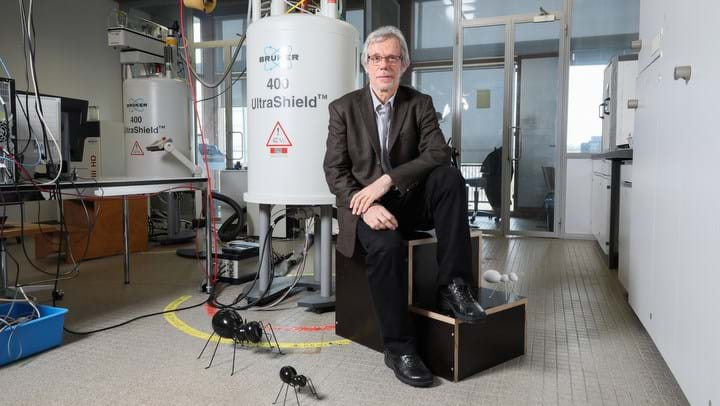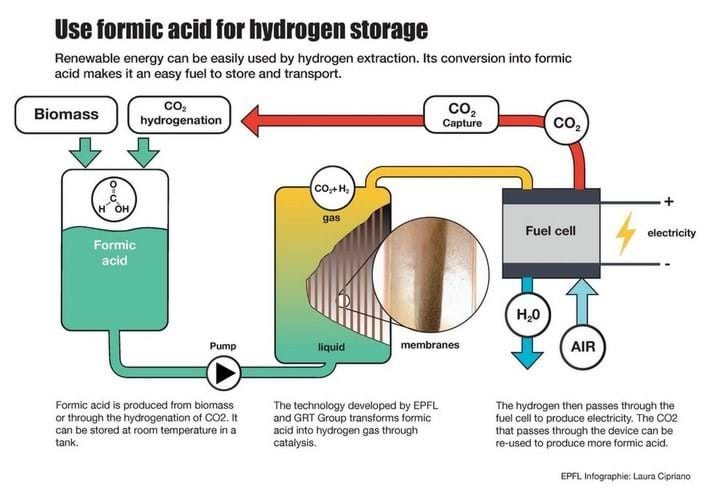Formic acid-based fuel cell developed for hydrogen storage

A FUEL cell has been developed that can store and transport hydrogen using formic acid so that the hydrogen can then be used as a power source.
Hydrogen can offer a clean alternative to fossil fuels as it doesn’t have any harmful emissions, but creating an infrastructure suitable for storing and transporting hydrogen is difficult and expensive, as the gas needs to be stored at high pressures and low temperatures.
Researchers in Switzerland have developed a world-first fuel cell called HYFORM-PEMFC that uses formic acid to produce hydrogen. Formic acid (HCO2H) is a liquid that is easy to transport and can be sustainably produced from biomass or from hydrogenation of CO2. The device consists of two parts; a hydrogen reformer (HYFORM) and a proton-exchange membrane fuel cell (PEMFC). HYFORM-PEMFC was developed by energy solutions company GRT Group and a research team lead by Gabor Laurenczy at École polytechnique fédérale de Lausanne (EPFL).
HYFORM-PEMFC can produce 590 L of hydrogen from 1 L of formic acid. The hydrogen is produced from the formic acid using a ruthenium catalyst, and the reaction also produces water and CO2. The hydrogen is then used as a fuel and the CO2 is captured and reused to create more formic acid.
"Hydrogen carriers, and their production from CO2, either through hydrogenation or from bio-waste or biomass, are considerably more sustainable than existing routes," said Laurenczy.

The fuel cell can be scaled up for both domestic and industrial applications, and could benefit people with limited or no access to the power grid as it doesn’t need an external power source. It has low operating costs and can produce 7,000 kWh/y with an electrical efficiency of 45%.
Future work will involve developing catalysts based on cheaper metals and creating an integrated system to allow surplus energy generated from solar and wind power to be stored in the fuel cell.
Recent Editions
Catch up on the latest news, views and jobs from The Chemical Engineer. Below are the four latest issues. View a wider selection of the archive from within the Magazine section of this site.




